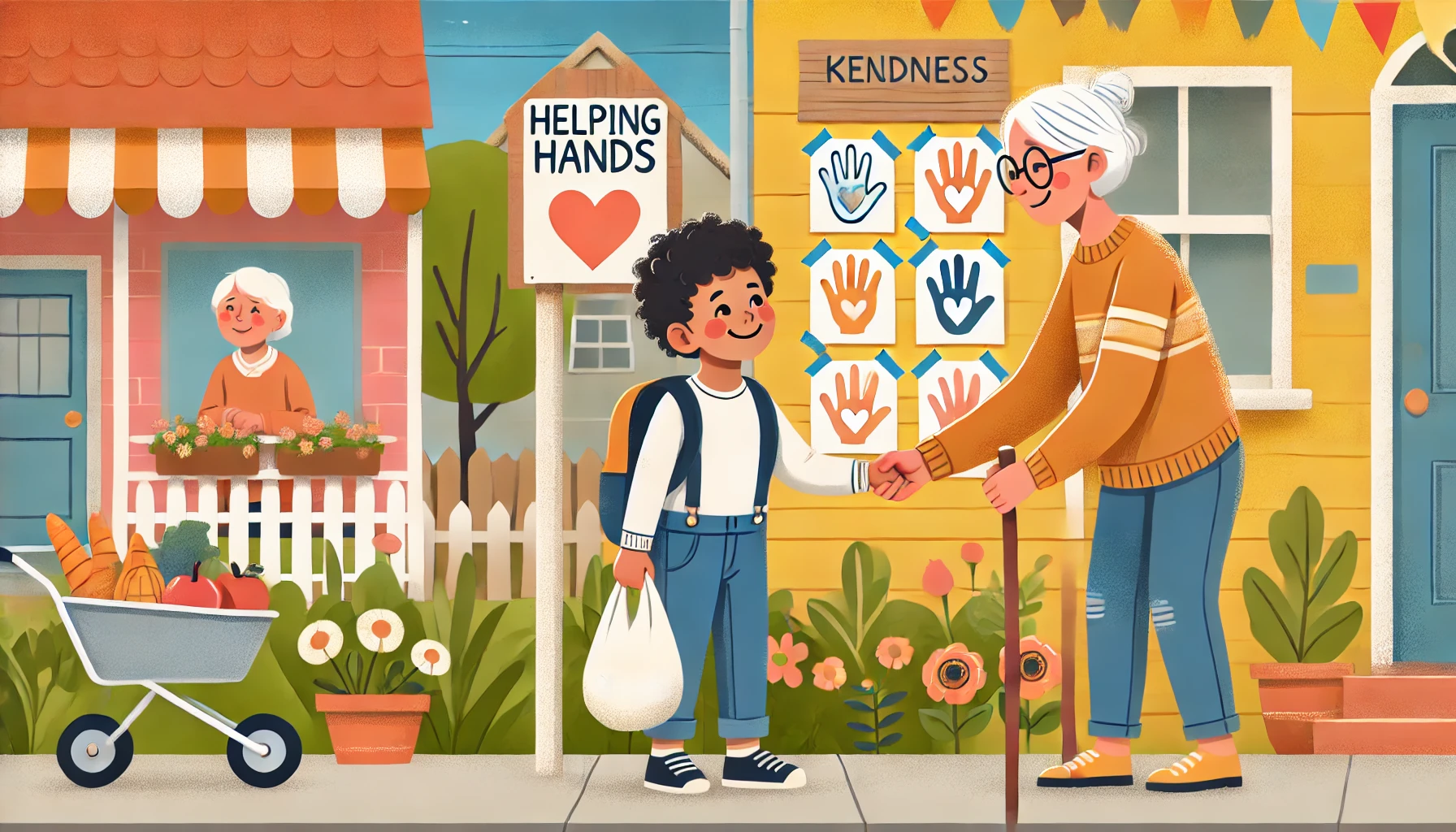Teaching young children about community and helping others helps them understand that they are part of something bigger than themselves. By learning how to show kindness, lend a hand, and care for their neighbors, kids grow into empathetic, socially aware individuals. These lessons can start small—right at home, in school, or in the neighborhood—and create a strong foundation of compassion and civic responsibility.
Why Teaching About Community Matters
- Builds empathy and social awareness
- Encourages responsibility and kindness
- Helps children feel connected to others
- Fosters teamwork and cooperation
- Develops gratitude and generosity
1. Explain What a Community Is
Start with simple language and local examples.
Activity Idea:
Say: “A community is a group of people who help and care for each other.”
Use pictures or a walk through the neighborhood to point out helpers: teachers, firefighters, mail carriers.
Ask: “Who helps us in our community?”
What Kids Learn:
- Understanding of community roles
- Sense of belonging
- Respect for helpers
2. Do Small Acts of Kindness Together
Model helping others through action.
Activity Idea:
Bake treats for a neighbor, pick up litter at a park, or help carry groceries.
Say: “We’re helping because we care about others.”
Let your child choose a simple act of kindness to do each week.
What Kids Learn:
- The joy of giving
- That small acts make a big difference
- Initiative and compassion
3. Read Books About Helping and Community
Stories inspire action and connection.
Activity Idea:
Read books like What If Everybody Did That? by Ellen Javernick or Last Stop on Market Street by Matt de la Peña.
Discuss: “How did the characters help others?”
Draw a picture of your child helping someone in the story.
What Kids Learn:
- How helping strengthens community
- Emotional connection to generosity
- Examples of positive behavior
4. Make a “Helping Hands” Wall
Visuals build pride and motivation.
Activity Idea:
Cut out paper hands and write a helpful action on each one.
Add a hand each time your child helps someone.
Watch the wall grow as a celebration of kindness!
What Kids Learn:
- Tracking positive actions
- Joy in recognition
- Motivation to continue helping
5. Visit Local Helpers or Community Centers
Real-world connections make lessons stronger.
Activity Idea:
Visit a fire station, library, or food pantry.
Talk to community workers about how they help others.
Say: “These people make our community better.”
What Kids Learn:
- Understanding community roles
- Appreciation for service
- Inspiration to contribute
6. Create a “Kindness Calendar”
Make helping others part of daily life.
Activity Idea:
Fill a monthly calendar with daily ideas: smile at someone, help clean up, say something kind.
Reflect at the end of each day: “What act of kindness did we do today?”
Decorate the calendar together.
What Kids Learn:
- Routine practice of generosity
- Anticipation and excitement for giving
- Gratitude and mindfulness
7. Celebrate Teamwork at Home
Community starts within the family.
Activity Idea:
Do chores together, cook meals as a team, or help a sibling with a task.
Say: “When we work together, we make our home a happy place.”
Highlight group efforts: “We cleaned the living room as a team!”
What Kids Learn:
- Team spirit
- Shared responsibility
- Positive group energy
8. Talk About Feelings When Helping Others
Helping makes everyone feel good.
Activity Idea:
After helping, ask: “How did it feel to do something nice for someone?”
Reflect together on how kindness affects others.
Say: “When we help, we spread happiness.”
What Kids Learn:
- Emotional reward of helping
- Empathy and awareness
- The power of their actions
Final Thoughts
Teaching young children about community and helping others encourages them to grow into thoughtful, compassionate citizens. With stories, small actions, daily reflection, and real-life experiences, kids learn that everyone has the power to make a difference. These lessons not only build strong individuals—they also create stronger, kinder communities for all.
